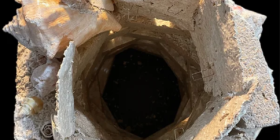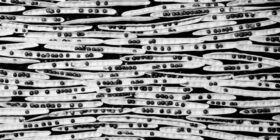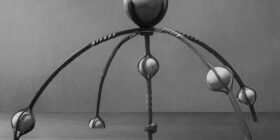Connecting the Microcosm and the Universe
Seiko Tachibana’s distinctive work balances Asian tradition with minimalist modernity, with works having a poetic beauty that explores the essential patterns of life. She creates images that suggest both a world in microcosm as well as the immensity of the universe. A recurring theme in her work is “the ways in which many small pieces come together to make up a larger whole,” and how modular and accumulating forms can create structures and dynamics.

fractal-ssi-4b
intaglio
24×22 inch (61×56 cm)
2017
Many great minds have been captivated by the concept of a single unifying principle that governs all that is our universe, a principle in which all things are connected by a universal truth. While we often associate this inquiry with the sciences and philosophy, it is also an important influence in the arts. I have long been intrigued and inspired by the concept of a unifying principle and have been creating artworks in which the concept is interpreted through shape, color, and spatial relationships. I create works in which elements function like organic building blocks: atoms form a molecule, molecules form a compound, compounds form a cell, cells form an organism, and so on. The marks, lines, shapes, colors, and textures that are the basic language of my work form a kind of network structure—a system of interconnected nodes that seem energized by their interaction within the network. In the interdependence, synergy, and the flow of meaning and significance within these networks, there is subtle and profound beauty.

fractal-fs-2b
intaglio
24×22 inch (61×56 cm)
2017

fractal-fs-1
intaglio
24×22 inch (61×56 cm)
2017
I draw a circle. It could represent a cell, a planet, infinity, or peace. When I draw the circle, I think of the connectedness of all these things, and I draw more circles. Circles connect to circles and circles contain circles, and thus Connection came to be. Working with these elements I see a kind of cosmos blossom, and within it emerge areas that suggest positive and negative space.

connection-milkyway o-4
acrylic on paper on panel
36×36 inch each (91×92 cm)
2016

connection-milkyway o-1
acrylic on paper on panel
20×40 inch each (51×76 cm)
2016

connection-milkyway o-2
acrylic on paper on panel
42×42 inch (107×107 cm)
2016

connection-pnc-m sereis
installation view
acrylic. ink on paper on panel
93×32 inch (236×90 cm)
2016

connection-pnc-u1
acrylic, ink on paper on panel
20×10 inch (50×25 cm)
2019

connection-pnc-u2
acrylic, ink on paper on panel
20×10 inch (50×25 cm)
2019

connection-pnc-u4
acrylic, ink on paper on panel
20×10 inch (50×25 cm)
2019

connection-pnc-u88
acrylic, ink on paper on panels
66×69 inch (168×175 cm)
2019
While working with circles I began experimenting with various methods of finding color relationships between elements. Through that experimentation I was inspired to create the works that comprise the Spatial-Diagram series. In Spatial-Diagram, I search for a harmony of colors to create a balance that brings together and connects the elements within their cosmos.

spatial-diagram g12-34
acrylic on panel
12″x12″ (30×30 cm)
2020

spatial-diagram g18-4
acrylic on paper on panel
18″x18″ (46×46 cm)
2019

spatial-diagram g-30-1
acrylic on panel
30″x30″ (76×76 cm)
2019

spatial-diagram g18-1
acrylic on paper on wood
18″x18″ (46×46 cm)
2019
………………………………………..
All images copyright and courtesy of Seiko Tachibana
Get the Full Experience
Read the rest of this article, and view all articles in full from just £10 for 3 months.



No comments yet.